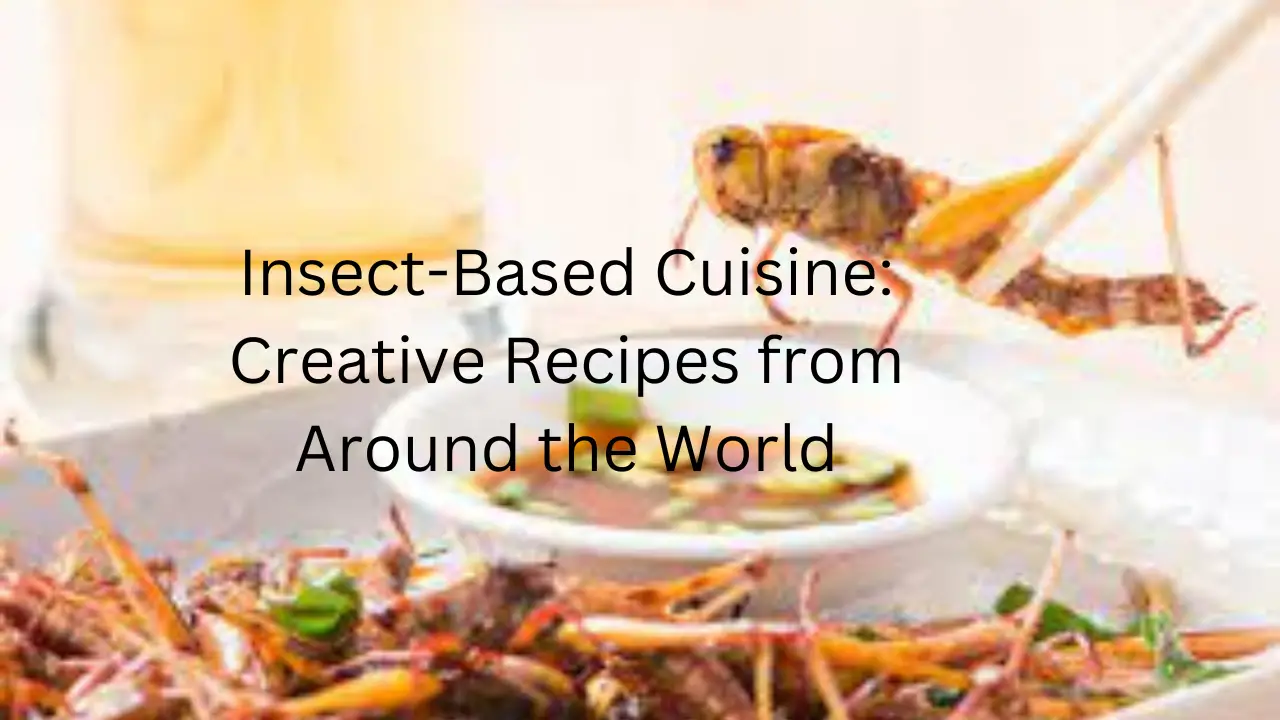
WENWELL Olympic Rings Decorations Flag 3x5 Ft Outdoor Indoor,International Sports Theme Flags Banner Party Supplies Hanging Home Decor,Yard Fence Photo Backdrop
$13.99 (as of July 27, 2024 08:07 GMT +00:00 - More infoProduct prices and availability are accurate as of the date/time indicated and are subject to change. Any price and availability information displayed on [relevant Amazon Site(s), as applicable] at the time of purchase will apply to the purchase of this product.)Insect-Based Cuisine: Creative Recipes from Around the World
In recent years, a unique culinary trend has been buzzing its way onto plates around the globe – insect-based cuisine. What may have once been seen as a daring and eccentric choice has now become a flavorful and sustainable culinary adventure. Join us as we explore the world of insect-based cuisine, its rise in popularity, its incredible health benefits, and even get a taste of creative insect-based recipes from various corners of the world.
Introduction to Insect-Based Cuisine
The Rise of Edible Insects
Insects have been a part of the human diet for centuries in various cultures, but their resurgence in popularity as a sustainable protein source is a relatively recent phenomenon. Concerns about environmental sustainability, coupled with the growing need for alternative protein sources, have led to the reevaluation of insects as a food source.
Benefits of Insect Consumption
Why are insects gaining popularity in the culinary world? Well, they are incredibly nutritious, packed with protein, vitamins, and minerals. Moreover, they are environmentally friendly, requiring significantly less land, water, and resources compared to traditional livestock farming.
Types of Edible Insects
Before we dive into mouthwatering recipes, let’s familiarize ourselves with some common edible insects. You’ll be surprised by the variety, including crickets, mealworms, grasshoppers, and even ants, each offering its unique flavor profile.
Exploring Global Insect-Based Recipes
Mexico: Chapulines Tacos
Ingredients and Preparation
Chapulines, or grasshoppers, are a Mexican delicacy that has been enjoyed for centuries. These crunchy critters are often seasoned with chili, lime, and salt, then served in soft corn tortillas. The combination of flavors is nothing short of spectacular, making chapulines tacos a must-try.
Thailand: Fried Silkworms
A Crispy Delicacy
Silkworms, a staple in Thai cuisine, are known for their delightful crunchiness when fried. Seasoned with a blend of spices, these little morsels are a popular street food snack in Thailand. The next time you visit, be sure to savor the crispy goodness of fried silkworms.
Japan: Inago no Tsukudani
A Sweet and Savory Treat
In Japan, you can find sweet and savory grasshoppers known as “Inago no Tsukudani.” Cooked in soy sauce, sugar, and mirin, these grasshoppers take on a delectable flavor that pairs perfectly with a bowl of rice. It’s a delightful dish that showcases the creativity of Japanese cuisine.
Africa: Mopane Worms Stir-Fry
Nutritious and Sustainable
In southern Africa, mopane worms have long been part of the traditional diet. These caterpillars are rich in protein and are commonly prepared in a stir-fry with vegetables and spices. Not only is it delicious, but it’s also a sustainable choice for addressing food security.
Europe: Cricket Pasta
A High-Protein Italian Delight
Italy, known for its pasta, has embraced the idea of cricket pasta. Made by blending cricket flour with traditional wheat flour, it’s a high-protein option that doesn’t sacrifice taste. From spaghetti to lasagna, it’s revolutionizing Italian cuisine one dish at a time.
Cooking with Insects at Home
Getting Started with Insect Cuisine
Ready to embark on your insect-based culinary journey? Start by sourcing high-quality edible insects from reputable suppliers. Experiment with flavors, and don’t be afraid to incorporate them into your favorite recipes.
Essential Cooking Tips
Cooking with insects is similar to cooking with other proteins, but there are some nuances to consider. Keep an eye on cooking times, experiment with different seasonings, and always ensure proper hygiene when handling insects.
Overcoming the Ick Factor
We understand that the idea of eating insects can be a bit daunting for some. However, the incredible flavors and benefits they offer are well worth overcoming any initial hesitation. Think of it as an exciting culinary adventure!
Conclusion
Insect-based cuisine is not just a trend; it’s a sustainable and delicious way to enjoy diverse flavors while reducing the environmental impact of our food choices. From Mexico to Japan and beyond, these insect-based recipes are a testament to human creativity and adaptability in the kitchen. So, why not take a leap and explore the world of insect-based cuisine for yourself? It’s a journey that promises both culinary excitement and a more sustainable future.
FAQs about Insect-Based Cuisine
1. Are insects safe to eat? Absolutely! When sourced from reputable suppliers and properly cooked, insects are safe to eat and are even considered a delicacy in many cultures.
2. What do insects taste like? The taste of insects varies depending on the type and how they are prepared. Some are nutty, others are savory, and some have a hint of sweetness.
3. Are there any allergens associated with eating insects? Just like any other food, some people may be allergic to insects. It’s essential to start with small quantities to check for any adverse reactions.
4. Where can I buy edible insects? You can find edible insects in some specialty food stores, online retailers, or even try your hand at raising them at home if you’re adventurous!
5. Are there any ethical concerns related to insect consumption? Insects are generally considered a sustainable and ethical protein source due to their minimal environmental impact and efficient resource use. However, it’s essential to source them from responsible suppliers to ensure ethical practices.











